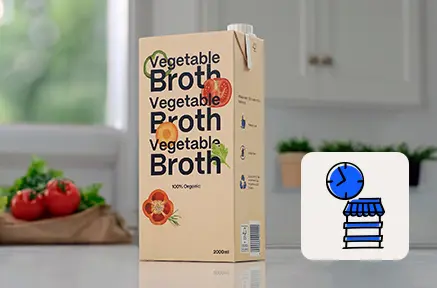Shelf-stable food products by segment

When it comes to shelf-stable food products, today’s consumers have an increasingly wide range of segments to choose from: be it processed tomato products, soups and sauces, fruits and vegetables, fruit purees, dairy and non-dairy, and a host of niche, growing segments that include liquid meals and broths.
How does each segment rank among consumers, what opportunities does this offer manufacturers, and what challenges must they overcome to deliver what the market wants and needs?
Shelf-stable products: a breakdown
When we think about shelf-stable products, one of the first – and most popular – segments that comes to mind is tomato-based products, with options including chopped tomatoes, tomato puree, ready-made sauces for cooking, condiments like ketchup, and so on.
Soup is another segment that has long been available in shelf-stable form, with a report from Nielsen indicating that as far back as 2007, aseptic soups were the fastest-growing category of soups. Shelf-stable soups have continued growing in popularity, in part spurred on by the COVID pandemic, and in part due to increased demand for convenient, ready-to-eat products across North America, Europe, Asia-Pacific, Latin America, and the Middle East and Africa.
Also among the top segments are dairy and non-dairy products, with increasing demand for plant-based milk alternatives in particular having a noticeable impact.
“Food categories are growing more complex and will remain relevant to development of the aseptic food market. Part of this growth can also be related to the increase in packaging variety available to consumers, with even conservative categories going through a shift.”
Tamara Dzalaeva, Category Manager Europe
The aseptic challenge
For manufacturers, the challenge with getting shelf-stable right is in finding the balance between innovative packaging and adding value to their business.
“Consumers are unwilling to compromise on naturalness, taste, sustainability or convenience but struggle to pay extra for this, putting significant pressure on manufacturers and retailers to justify their prices and manage their costs.”
Tamara Dzalaeva
At SIG, our innovative, versatile aseptic carton packs and spouted pouches can help our customers add more value to their shelf-stable products without the resulting cost impact: allowing manufacturers to fill products quickly and safely while building more sustainable processes – among other attributes. Today’s shelf-stable food products are also, by nature, futureproof, given their packaging is designed to meet increasingly strict regulations regarding food safety.
In part three of the series, we turn focus to the role of shelf-stable packaging within the global sustainability movement. From the packaging itself to the way food products are filled, what makes aseptic packaging the more responsible choice? Sign up to our monthly newsletter to stay on top of everything you need to know about the food and beverage industry.

Expert take: exploring the shelf-stable market of the future

The role of shelf-stable foods within sustainability

